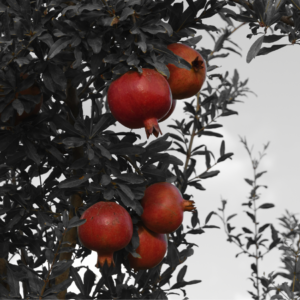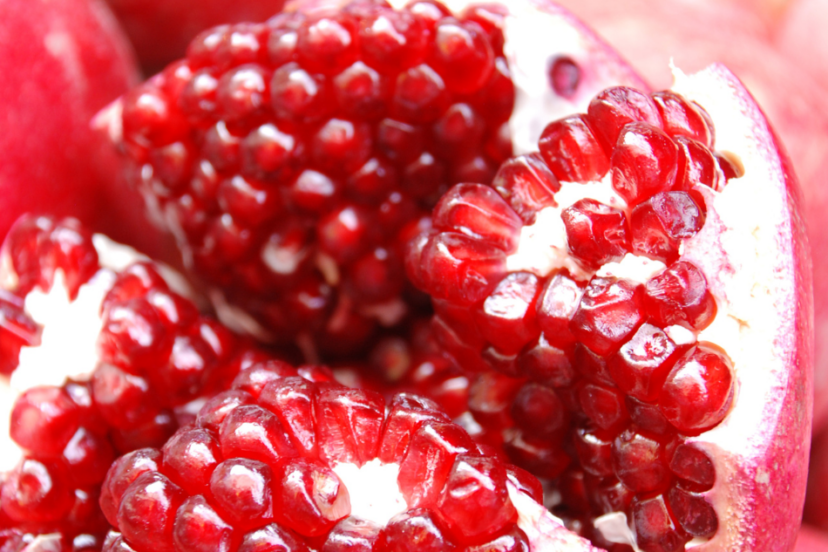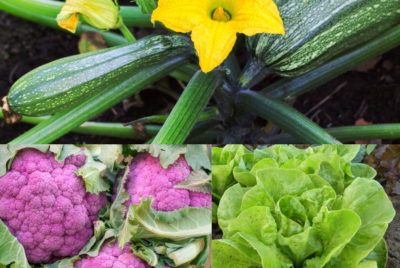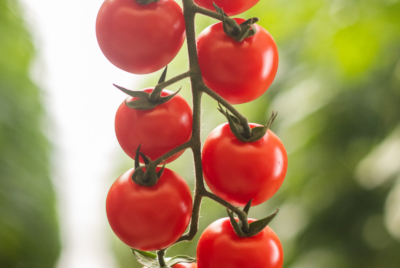Growing a Pomegranate Tree In a Pot
Trees are a wonderful addition to any garden, and pomegranate trees in particular can thrive even in pots, offering a bountiful harvest of delicious fruits. In this blog post, we will share tips and tricks for successfully growing a pomegranate tree in a pot, from selecting the right pot and soil to proper care and maintenance for a fruitful yield. Whether you’re a novice gardener or a seasoned plant enthusiast, get ready to enjoy the rewards of cultivating your own pomegranates right at home!

Key Takeaways:
- Choose the right container: Select a large pot with good drainage to ensure the pomegranate tree has enough space to grow.
- Use well-draining soil: Opt for a well-draining potting mix to prevent waterlogging, which can harm the roots of the pomegranate tree.
- Provide adequate sunlight: Place the potted pomegranate tree in a sunny spot where it can receive at least 6-8 hours of sunlight daily.
- Water regularly: Water the pomegranate tree deeply but infrequently, allowing the top inch of soil to dry out between waterings.
- Prune and fertilize: Trim the tree to promote growth and fruit production, and use a balanced fertilizer during the growing season to support healthy development.
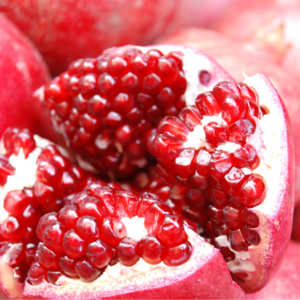
Selecting Your Pomegranate Tree
Choosing the Right Variety
Before selecting your pomegranate tree, consider the variety that will thrive best in your climate and space. Any well-known varieties such as Wonderful, Ambrosia, or Eversweet are good choices for growing in pots due to their compact size and adaptability.
Where to Buy Healthy Trees
Before purchasing your pomegranate tree, make sure to buy it from a reputable nursery that sells healthy trees. Healthy trees are crucial for a successful harvest as they are more likely to establish well and produce good quality fruits. Look for nurseries that offer a selection of pomegranate trees and provide care instructions to ensure your tree’s long-term health.
This will help you avoid purchasing trees that may be diseased or stressed, which can lead to poor growth and fruit production in the long run. Choose a nursery with positive reviews and a good track record of selling healthy trees.
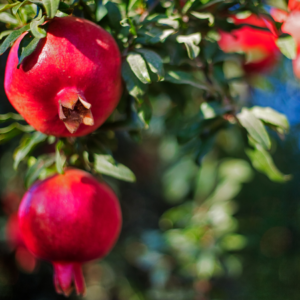
Preparing for Planting
Selecting the Right Pot
Some important factors to consider when selecting a pot for your pomegranate tree include the size, drainage holes, and material. The pot should be at least 5 gallons in size to allow for the tree’s roots to grow comfortably. Make sure it has good drainage holes to prevent waterlogging, and opt for a sturdy material like terracotta or plastic. There is also an air pruning pot which you can stand in your garden which does not have as much aesthetic appeal but will keep the roots healthy and net you lots of fruit. You can create your own mini orchard with these in your own back yard. Click here to go to Air Pruning Pots article.
Soil and Fertilization Needs
The soil you choose for your pomegranate tree is crucial for its growth and fruit production. Use a well-draining potting mix formulated for fruit trees. Fertilize with a balanced fertilizer high in potassium to promote flower and fruit development.
Preparing the right soil mix and providing adequate fertilization will ensure your pomegranate tree thrives and produces a bountiful harvest.
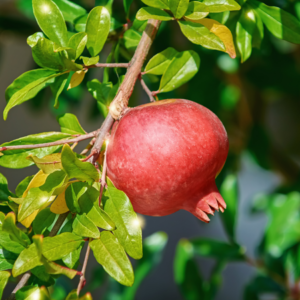
Caring for Your Potted Pomegranate
Watering Requirements
To ensure your potted pomegranate tree thrives, it is crucial to provide it with consistent and moderate watering. Keep the soil moist but not waterlogged. During the growing season, typically spring and summer, increase watering frequency, and reduce it in the dormant winter period. Monitor the soil moisture regularly, as potted plants can dry out faster.
Pruning and Maintenance
Keeping up with pruning and maintenance is vital for the health and productivity of your pomegranate tree. Trim away any dead or damaged branches, thin out overcrowded areas, and shape the tree for optimal growth. Regularly inspect your tree for pests and diseases, and take necessary action promptly to protect your plant.
Pruning also helps improve air circulation, stimulate new growth, and increase fruit production. Do not be afraid to give your pomegranate tree a good trim each year to promote a bountiful harvest.

Troubleshooting Common Issues
Pest Management
All pomegranate trees are susceptible to pests such as aphids, mealybugs, and fruit flies. To keep these critters at bay, it’s important to regularly inspect your tree for any signs of infestation. One natural way to control pests is by introducing beneficial insects like ladybugs or lacewings that feed on these pests. You can also use organic insecticidal soap or neem oil to deter unwanted visitors.
Dealing with Diseases
On occasion, pomegranate trees can be affected by diseases like fungal leaf spot or root rot. To prevent these issues, make sure your tree is planted in well-draining soil and receives adequate airflow to prevent fungal growth. If you notice any signs of disease, such as yellowing leaves or wilting branches, act quickly to address the problem. Remove any affected leaves or branches, and treat the tree with a fungal spray or appropriate fungicide to help it recover.
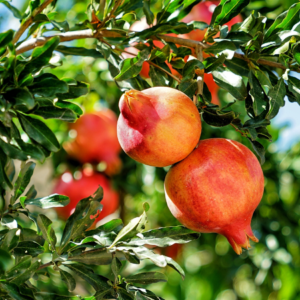
To wrap up
Hence, growing pomegranate trees in pots is a rewarding experience that can result in a bountiful harvest of delicious fruits. By following the tips mentioned in this guide, you can ensure that your pomegranate tree thrives in a container and provides you with an abundance of juicy, nutrient-rich pomegranates. Happy gardening!

FAQ
Q: What are the benefits of growing pomegranate trees in pots?
A: Growing pomegranate trees in pots allows you to easily manage the tree’s environment, control its growth, and even move it indoors during cold weather. It also makes it possible for those with limited space to enjoy growing this fruit!
Q: What type of soil is best for growing pomegranate trees in pots?
A: Pomegranate trees thrive in well-draining soil that is slightly acidic. A mix of potting soil, sand, and perlite works well to provide the tree with the right balance of nutrients and drainage.

Q: How often should I water my pomegranate tree in a pot?
A: Pomegranate trees prefer slightly dry conditions, so it’s best to allow the top inch of soil to dry out between waterings. During the growing season, water the tree deeply once a week, and reduce watering during the dormant season.
Q: Do pomegranate trees need fertilizer when grown in pots?
A: Yes, pomegranate trees benefit from regular fertilization when grown in pots. Use a balanced fertilizer formulated for fruit trees and apply it according to the package instructions during the growing season.
Q: How can I ensure a bountiful harvest from my pomegranate tree in a pot?
A: To ensure a bountiful harvest, make sure your pomegranate tree receives an adequate amount of sunlight, regular watering and fertilization, and proper pruning to promote fruit production. Additionally, protect the tree from pests and diseases by keeping it healthy and monitoring its growth closely. With proper care, you can enjoy a bountiful harvest of delicious pomegranates from your potted tree!
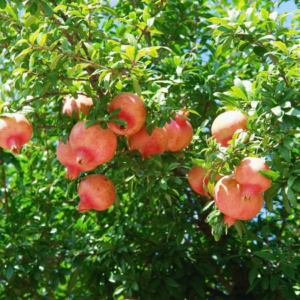
Growning Lime Trees in Pots with these proven methods
Tips for Growing Tangerine Trees
What are the best ways to Nurture Lemon Trees from Seedlings
Growing Oranges in your Backyard
Growing Fruit trees and Vegetables in Air Pruning Pots
Pomegranate Vinaigrette Salad Dressing
Peel a Pomegranate the Fast Way
